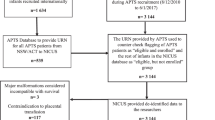Abstract
Objective:
Although common among Neonatal Intensive Care Units, multiples births are randomized inconsistently within trials, which can impact enrollment, analytical approach and trial outcomes. It is not known what randomization approach (same arm, different arm and independent randomization) is preferred by multiples and their families.
Study design:
Surveys distributed to parents of multiples and adult multiples addressed the preferences on randomization by eliciting the most desired method and likelihood of enrolling twins for each randomization approach.
Result:
Populations included 209 parents and 321 adult multiples. Seventy-eight percent of parents and 59% of multiples prefer same arm placement of multiples over other methods (both P<0.001), which also had highest likelihood of enrollment among both the groups.
Conclusion:
Parents of multiples and adult multiples prefer placement of multiples into same treatment arm in randomized trials, making such methodology a potential way to optimize consent rates while ethically approaching human subject research.
This is a preview of subscription content, access via your institution
Access options
Subscribe to this journal
Receive 12 print issues and online access
$259.00 per year
only $21.58 per issue
Buy this article
- Purchase on Springer Link
- Instant access to full article PDF
Prices may be subject to local taxes which are calculated during checkout

Similar content being viewed by others
References
Hibbs AM, Black D, Palermo L, Cnaan A, Luan X, Truog WE et al. Accounting for multiple births in neonatal and perinatal trials: systematic review and case study. J Pediatr 2010; 156: 202–208.
Chauhan SP . Twins: prevalence, problems, and preterm births. Am J Obstet Gynecol 2010; 203: 305–315.
Gates S, Brocklehurst P . How should randomised trials including multiple pregnancies be analysed?. BJOG 2004; 111: 213–219.
Heo M, Leon AC . Comparison of statistical methods for analysis of clustered binary observations. Stat Med 2005; 24: 911–923.
Yelland LN, Saltera AB, Ryan P, Makrides M . Analysis of binary outcomes from randomised trials including multiple births: when should clustering be taken into account?. Paediatr Perinat Epidemiol 2011; 25: 283–297.
Shaffer ML, Kunselman AR, Watterberg KL . Analysis of neonatal clinical trials with twin births. BMC Med Res Methodol 2009; 9: 1–8.
Marston L, Peacock JL, Yuc K, Brocklehurst P, Calvert SA, Greenough A et al. Comparing methods of analysing datasets with small clusters: case studies using four paediatric datasets. Paediatr Perinat Epidemiol 2009; 23: 380–392.
The Readability Test Tool [homepage on the Internet]. Cited May 22, 2014 Available from http://read-able.com/.
Kodish E, Eder M, Noll RB, Ruccione K, Lange B, Angiolillo A et al. Communication of randomization in childhood leukemia trials. JAMA 2004; 291: 470–475.
Emanuel EJ, Wendler D, Grady C . What makes clinical research ethical?. JAMA 2000; 283: 2701–2711.
Jonsen A, Siegler M, Winslade W . Clinical Ethics: A Practical Approach to Ethical Decisions in Clinical Medicine. McGraw Hill: New York, 2002.
Kodish E . Informed consent for pediatric research: is it really possible? J Pediatr 2003; 142: 89–90.
Snowdon C, Garrcia J, Elbourne D . Making sense of randomization; responses of parents of critically ill babies to random allocation of treatment in a clinical trial. Soc Sci Med 1997; 45: 1337–1355.
Robinson EJ, Kerra C, Stevens A, Lilford R, Braunholtz D, Edwards S . Lay conceptions of the ethical and scientific justifications for randomallocation in clinical trials. Soc Sci Med 2004; 58: 811–824.
Acknowledgements
We would like to thank all organizations who helped distribute the survey and all survey participants for their valued assistance and insight. ResearchMatch is funded in part by the National Institutes of Health (NIH) Clinical and Translational Science Award (CTSA) program, grants UL1TR000445 and 1U54RR032646-01. The Clinical and Translational Science Collaborative (CTSC) grant supports (UL1TR000439) RedCap databases.
Author information
Authors and Affiliations
Corresponding author
Ethics declarations
Competing interests
The authors declare no conflict of interest.
Additional information
Supplementary Information accompanies the paper on the Journal of Perinatology website
Supplementary information
Rights and permissions
About this article
Cite this article
Bernardo, J., Nowacki, A., Martin, R. et al. Multiples and parents of multiples prefer same arm randomization of siblings in neonatal trials. J Perinatol 35, 208–213 (2015). https://doi.org/10.1038/jp.2014.192
Received:
Accepted:
Published:
Issue Date:
DOI: https://doi.org/10.1038/jp.2014.192



